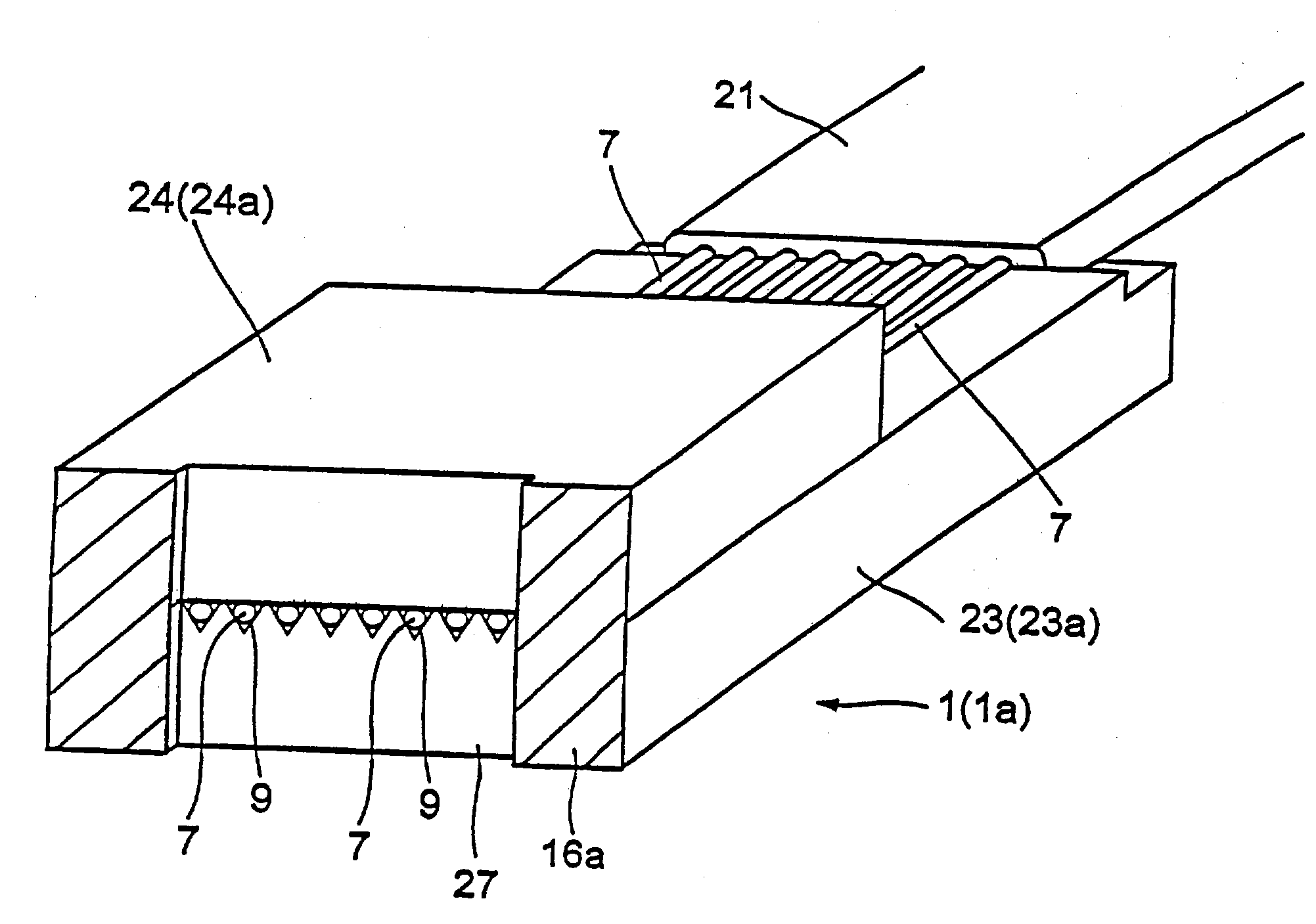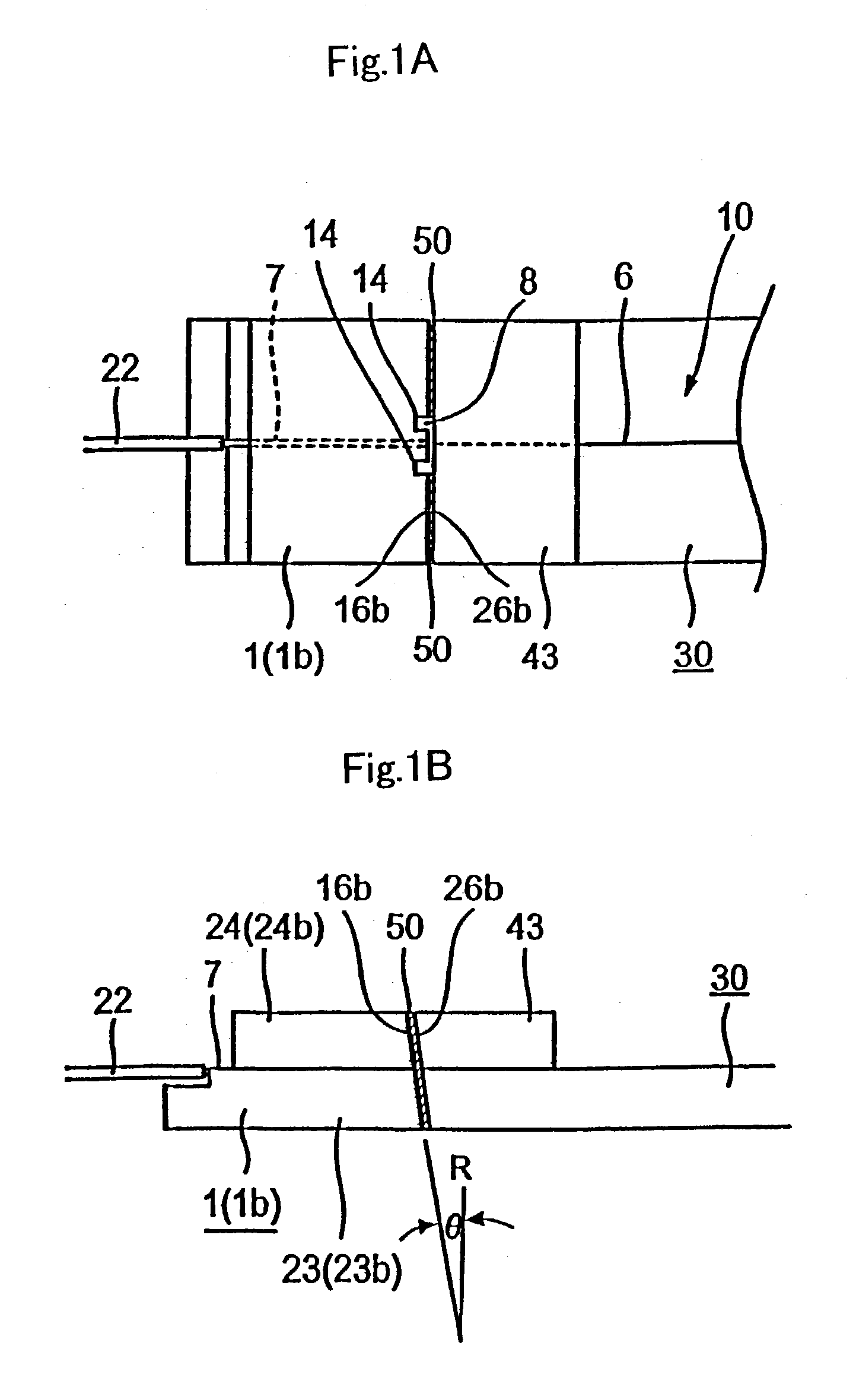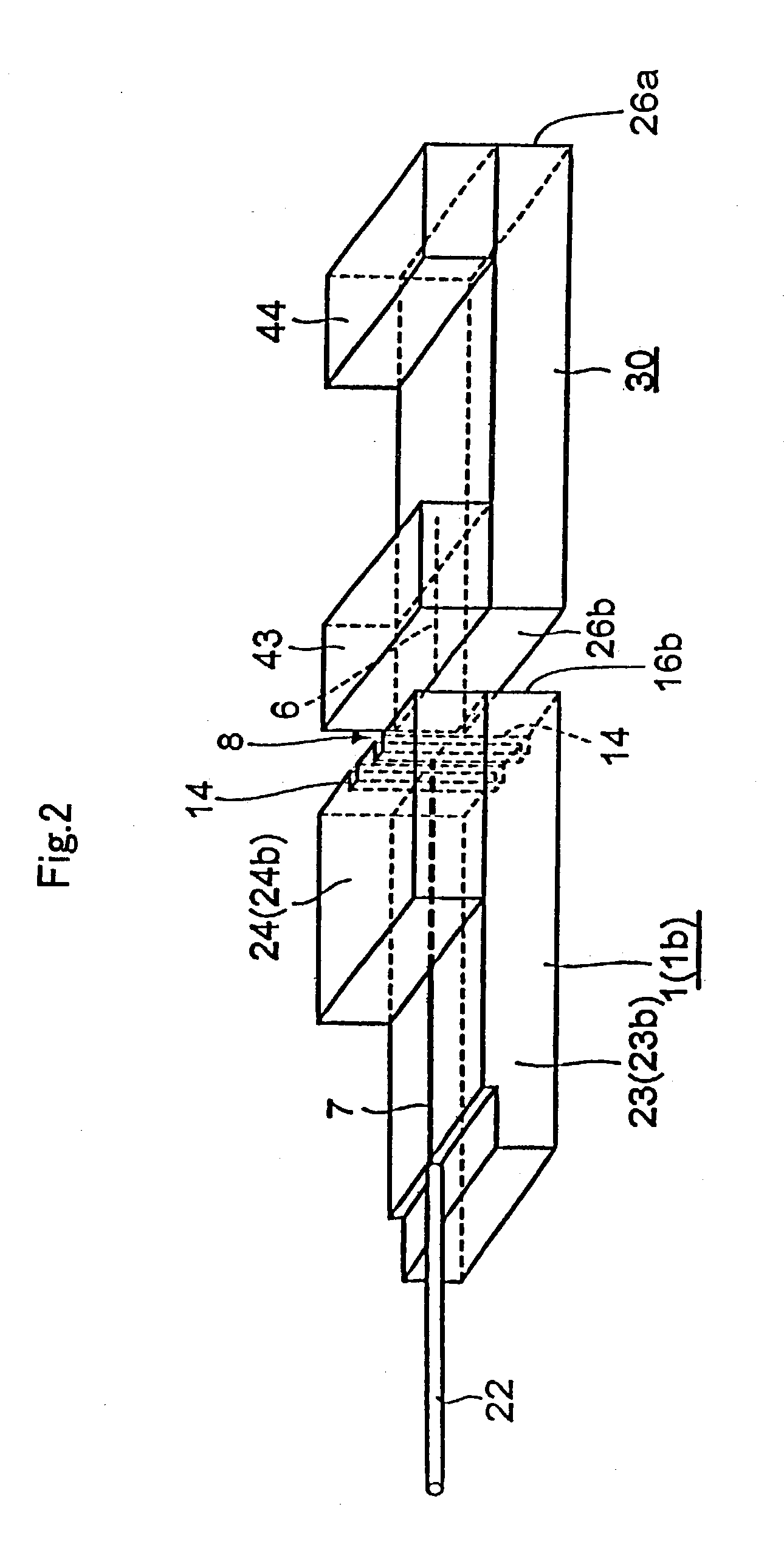Optical module
a technology of optical fiber and optical fiber, applied in the field of optical fiber modules, can solve the problems of poor durability against light, limited light emitted by the light source used for pumping, and poor durability
- Summary
- Abstract
- Description
- Claims
- Application Information
AI Technical Summary
Problems solved by technology
Method used
Image
Examples
first embodiment
[0149] Furthermore, FIGS. 1A and 1B do not show the detailed configuration of a planar lightwave circuit 10 of the planar lightwave circuit component 30. However, in the optical fiber module of the first embodiment, the planar lightwave circuit component 30 has the planar lightwave circuit 10 of a straight waveguide, which is formed straight from the optical input end to the optical output end. The left end sides in FIGS. 1A and 1B are the output side of the optical fiber module. A single output optical waveguide 6 formed in the planar lightwave circuit component 30 is connected to an optical fiber 7 of the optical fiber array 1 (1b).
[0150] Moreover, not shown in FIGS. 1A and 1B, the input side of the optical fiber module of the first embodiment has the same configuration of the output side.
[0151] FIG. 2 illustrates the planar lightwave circuit component 30 and the optical fiber array 1 (1b) in the state before connected. Also in FIG. 2, the circuit configuration of the planar light...
second embodiment
[0184] In the optical fiber module of the second embodiment, the planar lightwave circuit component 30 has a planar lightwave circuit 10 that the number of stages of the Mach-Zehnder interferometer circuits 15 is one stage greater than that of the circuit connecting the Mach-Zehnder interferometer circuits 15 in multiple stages shown in FIG. 29.
[0185] FIG. 7 omits the detailed configuration of the planar lightwave circuit 10. However, the planar lightwave circuit component 30 adapted to the second embodiment has a circuit in which the Mach-Zehnder interferometer circuits 15 are connected to the separate input optical waveguides 2 shown in FIG. 29 and the light of eight wavelengths different from each other can be multiplexed.
[0186] In the optical fiber module of the second embodiment, the configuration of connecting the planar lightwave circuit component 30 to the optical fiber array 1 (1b) is the same as that of the first embodiment.
[0187] In addition, in the optical fiber module o...
PUM
 Login to View More
Login to View More Abstract
Description
Claims
Application Information
 Login to View More
Login to View More - R&D
- Intellectual Property
- Life Sciences
- Materials
- Tech Scout
- Unparalleled Data Quality
- Higher Quality Content
- 60% Fewer Hallucinations
Browse by: Latest US Patents, China's latest patents, Technical Efficacy Thesaurus, Application Domain, Technology Topic, Popular Technical Reports.
© 2025 PatSnap. All rights reserved.Legal|Privacy policy|Modern Slavery Act Transparency Statement|Sitemap|About US| Contact US: help@patsnap.com



